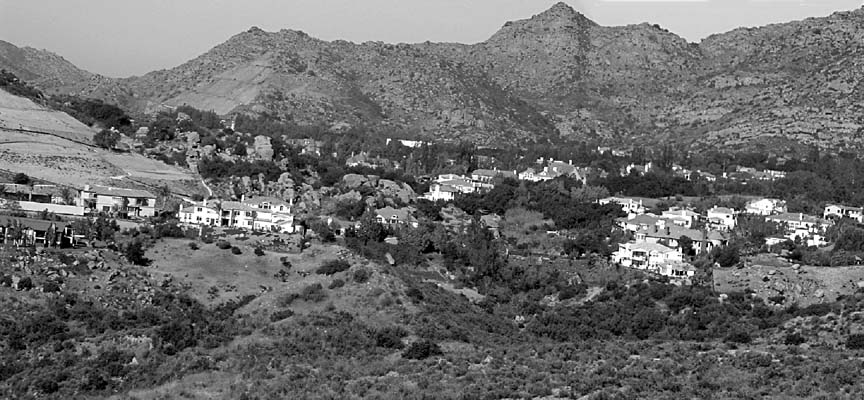

Celebrated as the most shot-up movie location ranch in motion picture history, the Iverson Movie Ranch, situated in the picturesque rocky foothills of the Santa Susana Mountains just northwest of Chatsworth, has been used to simulate terrain in Africa, Asia, the South Seas, the Wild West and Alien Planetscapes.
As many as 2,000 motion pictures and television shows are reported to have used the Iverson Movie Ranch to shoot some or all of their outdoor scenes. Its picturesque sandstone boulders, oak trees, along with Chatsworth Peak, Rocky Peak and Oat Mountain backdrops, make it one of the most recognizable sites to movie viewers of all generations.
The history of the Iverson Ranch began about 1884, when James R. Williams convinced his sister-in-law Agusta Wagman, an emigrant from Norrkoping, Sweden, to homestead 160 rocky acres immediately east of the Niels Johnson Ranch to the south of Devil Canyon in northwest Chatsworth. He had already homesteaded his 160-acre parcel south of the Johnsons about 1882 and planned to raise cattle.
He also had a scheme to acquire Agusta’s property once her homestead was “proved up.” However, after living alone for a few years during which she barely eeked a farm out of the rocky soil, Agusta changed her mind and decided to keep the farm she had worked so hard to get started.
In October 1888, Agusta met and married Carl Iverson, an emigrant from Norway. When the 1900 Federal Census was conducted, the Iversons listed five children: Carl, Irma, Aaron, Joseph and Jena. Eventually the Iverson Ranch grew to more than 500 acres. Later the Williams’ homestead became part of the infamous Spahn Ranch, but that’s another story.
In 1912, the completion of the California Aqueduct brought water and settlers to the San Fernando Valley, and portions of D.W. Griffith’s Man’s Genesis (1912) was filmed at the Iverson Ranch. The very next year Cecil B. DeMille shot The Squaw Man (1914) in Chatsworth.
During the early years Carl, Agusta and son Joseph managed the ranch. Around 1927, the ownership of the ranch was given to two of the sons (Aaron and Joseph), the other children having moved away.
The original Iverson Ranch was located north of Santa Susana Pass Road and ran west from just east of today's Topanga Canyon Boulevard to the Johnson Ranch on the west. In 1929, the Johnson Ranch was sold and became the Brandeis Ranch, which I’ll cover in a later chapter.
In its heyday, in addition to the magnificent rock outcroppings, rugged chaparral, and oak tree landscape, the ranch had miles of scenic chase and insert roads, a complete adobe village, a western street, and a ranch set that included a ranch house, bunkhouse, barn and other outbuildings. It also had many small buildings that were used as miner cabins, outlaw shacks and stagecoach relay stations.
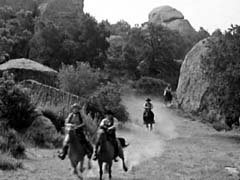
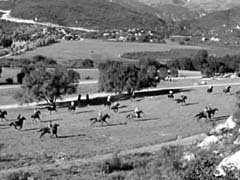
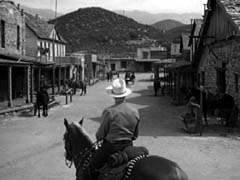
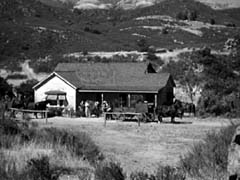
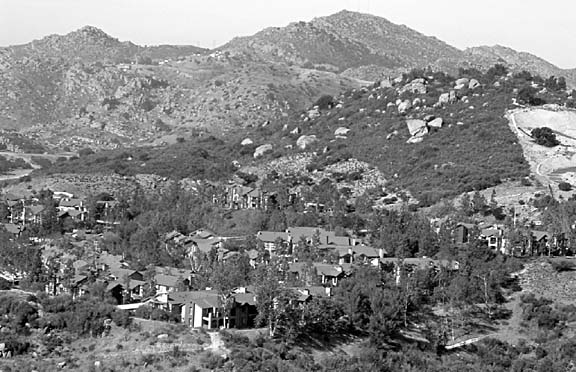
By 1937, the Iverson Ranch reported an income of more than $50,000 a year. The Iversons had a standard charge of $150 per camera per day for "Quickie B-Westerns," but charged major film companies more.
Iverson’s eccentric system of charging film-makers included a charge of 50¢ per day for each person entering the "ranch," 25¢ per horse per day, $1 per day for light vehicles, $2 per day for trucks, and $100 per day for each additional camera and generator. There were additional charges for electricity and water usage.
The Iversons also required all sets built on the ranch be left in place when filming was finished, but guaranteed they would not be used or remodeled by another film company for a period of two years. In 1937, the Iversons estimated there was a million dollars worth of sets in place on the ranch: The garrison for Lives of a Bengal Lancer cost $150,000, and the outpost for Wee Willie Winkie cost $40,000. Deserted buildings on the ranch (in 1937) included those used in filming Ali Baba Goes to Town, Wells Fargo, The Good Earth, They Gave Him a Gun, The Firefly, The Bride Wore Red, The Old Soak, and High, Wide and Handsome.
By 1962, the ownership of the ranch had been divided into two sections: Joseph owning the lower Iverson; and Aaron, the upper Iverson. In 1966-68, the construction of the Simi Valley Freeway (California Route 118/Ronald Reagan Freeway) cut the Iverson Ranch in half. By the end of the ‘60s, the incessant freeway noise kept the ranch from being a viable movie location any longer.
In 1982, Joe Iverson sold the lower Iverson to Robert G. Sherman, who almost immediately began subdividing the property. By the 1990s, most of the ranch had been subdivided into three portions:
The Upper Iverson Ranch is now known as Indian Springs and Indian Falls--large estate-size homes in a gate-guarded community.
The Iverson Ranch Set, sometimes called the Middle Ranch, is now the Summerset Village luxury rental apartments.
The Lower Iverson Ranch now includes the old Joseph Iverson residence, the Indian Hills Mobile Home Village, the Cal-West Townhomes, the Church at Rocky Peak, and several acres of vacant land that once was the home of Carl and Agusta Iverson (and is often referred to as the Old Folks Home; it finally succumbed in 2008 to one of the many brushfires in the area). The only untouched portion of the lower Iverson Ranch is a 23-acre Garden of the Gods public park that straddles Redmesa Road, north of Santa Susana Pass Road.